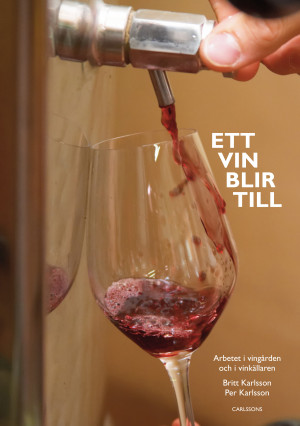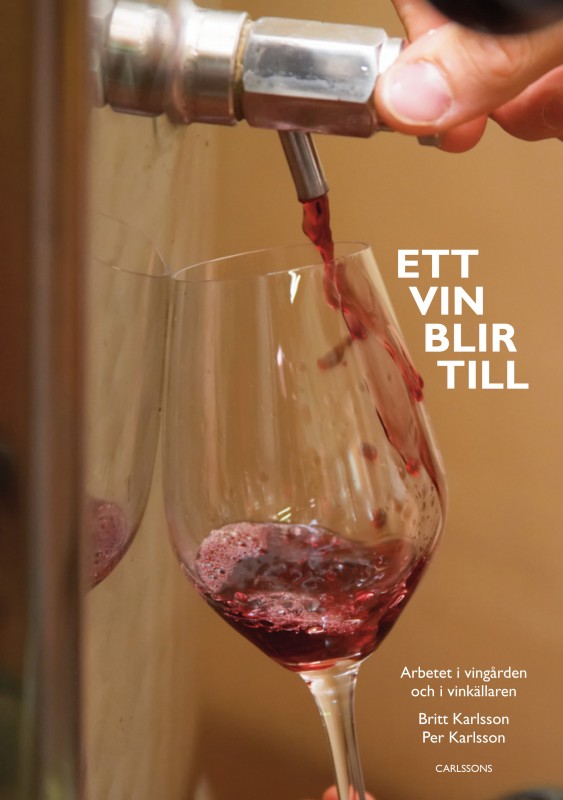Our second book: “The creation of a wine, the work in the vineyard and in the wine cellar” (or “A wine is born”)
-
Winner of “Best Wine Book in the World for Professionals”
-
Winner of “Best Wine Book of the Year”
Details:
Text: Britt Karlsson
Photo: Per Karlsson
Publisher: Carlsson Förlag
300 pages, 170x240mm, hard cover, lavishly illustrated with colour photographs

The book title may sound slightly presumptuous translated into English. In Swedish (“Ett vin blir till”), the original language, it is a reference to a ground breaking popular science and photography book by Lennart Nilsson (A child is born, “Ett barn blir till”, 1965-2009).
The book tells the story of how a wine is made. It’s aimed at the wine enthusiast but can also be used as a wine course book. It’s quite unusual in that it goes into the details of vine growing and winemaking – but with a text aimed at the wine lover.
The book has two sections: The first half is dedicated to the vineyard: planting, vines and grape varieties, training and pruning methods, soil, climate, illnesses, manual vs. mechanical harvest etc. We also try and get to grips with this thing “terroir”. The vineyard section ends with an explanation of organic wine growing and biodynamic wines (issues that are often misunderstood!). We try and explain it in a practical, down to earth way.
The second half talks about the work in the wine cellar: the importance of sorting (and how you do it), crushing, pressing, fermentation is looked at in detail, as is the ‘upbringing’ (élevage) of the wine and the aging, the influence of oak, assemblage (blending), fining and filtering (should you or should you not?) etc.
We look at what various substances you can add and the techniques and technology you can use in the winemaking to control and influence the result. Closures have a chapter of their own (another subject that is often misunderstood): natural cork, plastic cork, screw caps, crown caps etc, as does ‘special vinifications’: sweet wine and sparkling wines.
Finally we look at defects and problems, e.g. corked wine, brett and reduction. Selecting wines to cellar and age also gets a mention.
The story in the book evolves around two themes:
First, our innumerable conversations with winemakers, interviews, vineyard visits (we visit some 200-300 vineyards each year), wine shows etc. They, the winemakers, are to a great extent the ones who tell the story in the book, explaining what they do and why.
Secondly, we show that there are rarely any absolute truths. There are always different sides to an argument. If one winemaker says that you should absolutely have stainless steel fermentation tanks to make good wines, his neighbour will be convinced concrete is the best. The same goes for closures, oak, filtering, planting density etc etc. And both are generally right and both make good wines. The interesting thing then is why you do this or that. And we explain, or let them explain, that in the book.
Everything is illustrated over 300 pages with many, many colour photographs (you wouldn’t expect anything else from us, would you?). You can see details of pruning methods, of commonly used, and some very unusual, winery machines (have you ever seen a reverse osmosis machine?), a biodynamic dynamiser, the curious insides of fermentation tanks, to mention a few examples.
Sounds interesting?
Well, it’s published in Swedish (and the pictures are nice). We’d love to find a publisher for an English or French language edition. Any suggestions?









4 Responses